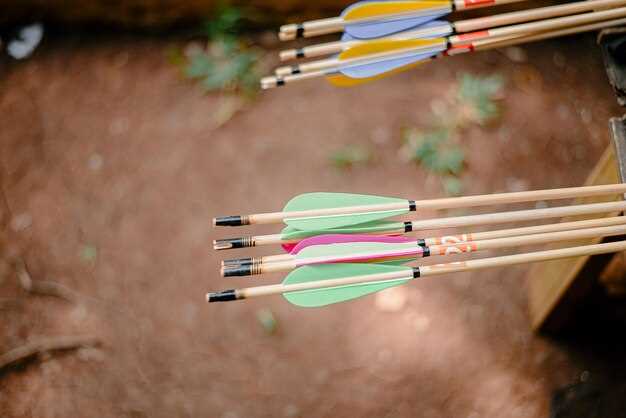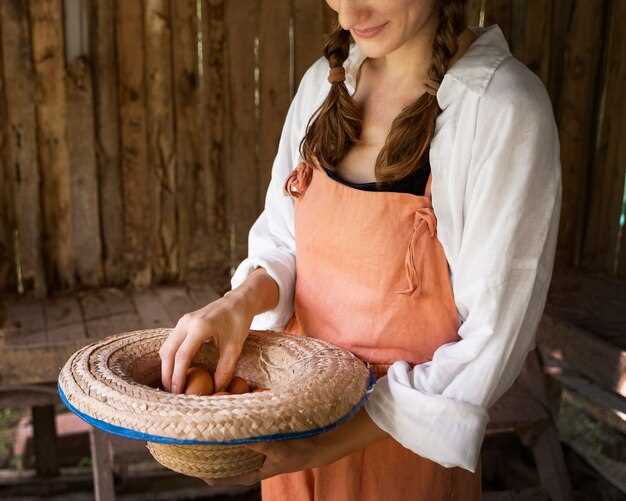Plan the event well in advance to ensure a successful archery contest. Start by selecting a suitable date and venue. Look for a location that provides enough space for both archers and spectators, while also adhering to all necessary safety regulations. The venue must have clear boundaries to define the shooting area, safe zones, and spectator zones.
Establish a set of clear, detailed rules for the contest. These should include guidelines concerning distance, target scoring, and timing. Define the archery equipment specifications allowed in the competition to maintain fairness. Make sure to communicate these rules to all participants well before the event to prevent any confusion.
Recruit qualified judges and support staff. Experienced judges can ensure that the competition is fair and runs smoothly. Support staff should assist in organizing equipment, managing the event schedule, and keeping scores. It’s vital to train all support personnel in their respective duties to enhance efficiency and safety on the day of the contest.
Create a robust registration process for participants. Collect essential details such as age, skill level, and any club affiliations. Make sure to verify registration applications in advance to ensure that all participants meet the criteria defined in your rules. Engage with the archery community through local clubs and social media to reach a broader audience and encourage participation.
Lastly, ensure that all safety measures are in place. This includes having medical assistance readily available and ensuring that all equipment is properly checked before use. Conduct a safety briefing before the start of the contest to inform participants and spectators about the procedures to follow in case of an emergency.
Organizing an Archery Contest: Ensuring Authenticity and Safety
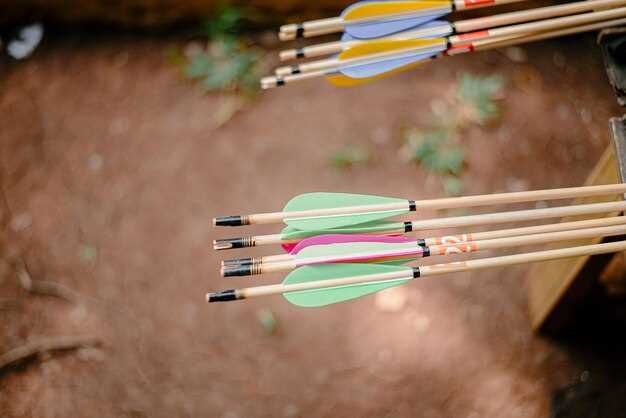
Adopt accurate timing devices to track performance closely, ensuring each archer’s skills are measured precisely. Use certified equipment to match international standards, and consistently maintain it for accuracy and reliability.
- Verify the credentials of judges and instructors to enhance credibility. Experienced judges enforce rules fairly, ensuring contests align with established archery standards.
- Organize pre-contest safety workshops. These sessions should provide comprehensive guidelines on proper equipment handling, shooting techniques, and emergency procedures.
- Install safety nets or barriers around the shooting range. Clearly mark restricted zones to prevent unauthorized access. Compliance with these measures reduces risks significantly.
- Use official scoring systems and maintain transparent records. Accurate scoring ensures the contest reflects true performance levels, enhancing authenticity.
- Incorporate regular equipment checks to prevent malfunctions and accidents. Recruit equipment specialists to inspect bows, arrows, and protective gear meticulously.
- Offer medical assistance on-site. An easily accessible first-aid station and trained personnel ready to respond to injuries or emergencies underline participant safety.
Building a culture of safety and authenticity requires all organizers, participants, and volunteers to commit to these guidelines. This environment inspires confidence, allowing archers to compete at their best.
Establishing Rules and Ensuring Authenticity

Clearly define scoring rules to maintain consistency across all rounds. Assign specific points to each scoring zone on the target and communicate these clearly to all participants. This ensures fairness and minimizes disputes.
To verify the authenticity of equipment, implement a mandatory gear check before the event. Inspect bows, arrows, and other accessories to confirm compliance with competition standards. This process prevents the use of unauthorized modifications or equipment.
Appoint a team of trained judges and officials responsible for monitoring adherence to rules throughout the contest. Ensure they undergo a briefing session to understand rules, potential disputes, and resolution processes. This guarantees informed judgments and fair play.
Integrate randomized shooting order to eliminate any unfair advantages based on position. Utilize electronic or manual systems to generate shooting sequences, ensuring transparency and unpredictability in the competition flow.
Introduce penalties for infractions such as foot faults or time violations. Clearly outline these penalties in the rules, with consistent enforcement to deter rule-breaking and uphold the integrity of the contest.
Ensure all participants have access to rules and guidelines before the competition. Distribute these documents via email or provide hard copies at registration. Understanding expectations and regulations prevents misunderstandings.
Emphasize the importance of sportsmanship by promoting respectful behavior, encouraging participants to support each other, and reinforcing the idea that mutual respect enhances the experience for everyone involved.
Defining Competition Categories and Classes
Clearly define competition categories to cater to the diverse abilities and experience levels of participants. Consider segmenting by age, skill level, and equipment type to create a fair and enjoyable experience for all competitors.
- Age Groups: Organize competitors into groups such as Under 13, Under 18, Adult, and Senior. This approach levels the playing field and encourages participation across various age ranges.
- Skill Levels: Differentiate between Novice, Intermediate, and Advanced classes. This helps archers compete with peers of similar abilities, promoting skill development and confidence.
- Equipment Classes: Distinguish between different bow types such as Recurve, Compound, and Traditional. This ensures that participants compete under similar technical conditions, highlighting their proficiency with each specific type.
When defining these categories and classes, take into account the typical demographics of your participants and the goals of your event. Ensure transparent communication of these divisions to avoid misunderstandings. The clarity in categorization ensures an equitable environment conducive to a spirited and rewarding competition.
Setting Equipment Standards and Specifications
Establish clear guidelines for bows and arrows by specifying the acceptable types and materials. For recurve bows, ensure a maximum draw weight of 60 pounds to maintain fair competition. Allow compound bows with a let-off not exceeding 80%, promoting consistency among participants.
Require arrows made from aluminum, carbon, or aluminum-carbon composites. Prohibit wooden or fiberglass arrows to prevent performance variability and safety concerns. Enforce a maximum arrow length of 32 inches to suit most archers while maintaining a level playing field.
Mandate finger protection such as tabs or gloves for all archers. This enhances safety and ensures uniformity across competitors. For compound bow users, allow mechanical releases provided they align with safety standards.
Implement a strict inspection process before the contest. Check each piece of equipment to verify compliance with set specifications. Have a dedicated officiating team to handle equipment checks efficiently, ensuring readiness and adherence to rules.
Consider creating a checklist detailing all specifications and distribute it among participants ahead of the event. This practice helps archers prepare adequately, reducing discrepancies and ensuring a smooth competition flow.
Developing Scoring Procedures and Tie-breaking Methods
Establish clear scoring procedures to ensure fair competition and enhance the excitement for participants. Use the 10-point scoring system, common in modern archery contests, to provide precision in scoring. Encourage participants to aim for the center ring, awarding 10 points for a bullseye and decreasing as targets move outward. Use distinct color coding for each ring to reduce scoring errors and speed up the process. Implement electronic scoring systems for increased accuracy and real-time results if budget and technology access allow.
- Set up multiple scoring stations or judges equipped with scorecards for manual assessment.
- Provide training sessions for judges to standardize the scoring process, focusing on precise measurement techniques.
- Utilize technology to capture shot data and automate calculations, where available, for transparency.
Plan for potential ties by creating a straightforward tie-breaking procedure. These methods could include:
- Conducting a one-arrow shoot-off where the closest shot to the bullseye wins.
- Comparing the number of bullseyes hit during the regular rounds. The archer with the most bullseyes wins.
- Re-evaluating the highest single round score or the longest consecutive series of high scores.
Communicate these procedures clearly to all competitors before the contest to prevent confusion and ensure all participants understand how ties will be resolved. By establishing rigorous and transparent scoring and tie-breaking methods, you enrich the competitive experience and uphold the integrity of the event.
Maintaining Cultural and Historical Authenticity
Utilize traditional archery equipment consistent with historical records and cultural practices. Select longbows, recurve bows, and arrows crafted from authentic materials like wood, bone, or sinew. Prioritize craftsmanship that mirrors historical designs and techniques.
Create a setting that mirrors historical archery traditions. Host the contest in a location that reflects cultural significance, such as ancient castles, rural landscapes, or traditional archery fields. Use decorations and structures that enhance the historical ambiance, incorporating elements like hay bales, colorful flags, and wooden targets.
Incorporate rules and scoring systems from the historical contexts that the contest aims to represent. Study the archery practices of the chosen era or culture to ensure that all rules align with historical precedents while maintaining fairness and competition integrity.
Invite participants to dress in period-appropriate clothing, enhancing the authenticity of the event. Encourage the use of traditional garments, such as tunics, kilts, or kimonos, depending on the cultural or historical theme. This not only enriches the experience for participants and spectators but also pays homage to the archers of the past.
Engage with historians or cultural experts to provide insights and narratives about the historical context and significance of archery traditions. This can be done through interactive talks, booklet distributions, or informative signage placed strategically around the venue.
Integrate traditional ceremonies or rituals, such as blessings or dedications, that were historically associated with archery events. This can serve to honor the cultural roots and provide a deeper, immersive experience.
| Aspect | Recommendation |
|---|---|
| Equipment | Use traditional materials and designs, such as wood and bone. |
| Venue | Select historically significant locations or traditional archery fields. |
| Rules | Adopt historical scoring systems and rules from the relevant era. |
| Apparel | Encourage wearing traditional clothing specific to the culture or period. |
| Education | Include historical narratives or expert talks about archery traditions. |
| Ceremonies | Incorporate traditional ceremonies or rituals related to archery. |
Event Partnership and Safety Considerations
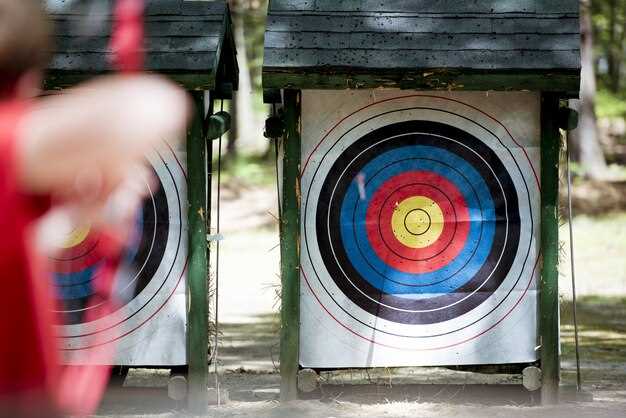
Collaborate with local archery clubs and organizations to enhance event credibility and attract skilled participants. Establish agreements with these partners to supply experienced judges, referees, and safety officers who understand the nuances of the sport.
Safety measures are paramount. Secure a venue with a designated shooting area that includes approved backstops and barriers to prevent stray arrows. Ensure that the range meets all national and local regulations regarding distances and safety protocols.
Implement stringent equipment checks, verifying that bows and arrows comply with competition standards. Organize a pre-event meeting for all competitors and staff to review safety procedures, emergency actions, and event schedules.
Engage medical personnel and set up easily accessible first aid stations on-site, ensuring rapid response to any incidents. Install clear signage around the venue to guide participants and spectators, enhancing both safety and event flow.
Maintain transparent communication channels between organizers, participants, and partners to quickly address any arising issues. Build a shared digital platform for real-time updates, which can include alerts about weather conditions or schedule changes.
By focusing on strategic partnerships and rigorous safety protocols, the event not only highlights competitive spirit but also prioritizes the well-being of all involved.
Selecting Appropriate Venues and Locations
Prioritize safety and accessibility by evaluating the potential location’s terrain and visibility. Look for an open field with a flat surface, allowing for clear lines of sight and minimal obstructions. Ensure compliance with local regulations and zoning laws concerning the use of public or private land for such events.
Assess the availability of amenities such as restrooms, parking spaces, and emergency access routes. Accessibility for participants and spectators, including those with disabilities, enhances the contest experience. Consider proximity to major transportation routes to facilitate easy arrival and departure for all attendees.
Ensure the venue has enough space for setting up the archery range, which includes designated shooting lines, safe zones, and spectator areas. Verify that the background behind targets is safe, with adequate containment measures to prevent stray arrows from posing a hazard.
Consider weather conditions typical for the area during the planned event time. Select venues that offer options for shelter or cover to protect participants in case of sudden rain or intense sun. Permanent or temporary structures can enhance comfort and safety during the competition.
Additionally, evaluate any technological or electrical needs, such as PA systems or electronic scoring equipment. Verify the availability of power sources or plan for portable generators if needed.
Collaborating with Sponsors and Local Organizations
Identify potential partners early and research their objectives and values to ensure alignment with your contest’s goals. Strong collaborations start with a clear understanding of mutual benefits.
Draft a succinct sponsorship proposal highlighting key aspects like audience demographics, expected attendance, promotional opportunities, and brand visibility. A well-structured proposal can significantly increase your chances of securing partnerships.
Engage local businesses by offering tailored sponsorship packages that include tiered benefits such as logo placement, product booths, and mentions in promotional materials. Local businesses often appreciate the opportunity to showcase their support for community events.
Facilitate meetings with potential sponsors and local organizations to discuss collaboration ideas and answer any questions they may have. Transparency and open communication foster trust and cooperation.
Consider forming a partnership committee with representatives from sponsors and organizations to streamline decision-making processes and address issues promptly. Regular updates and joint planning sessions ensure everyone remains on the same page.
Use the table below to organize potential sponsor benefit tiers to present during discussions:
| Sponsor Tier | Benefits |
|---|---|
| Gold | Banner placement, premium booth space, prominent program mentions |
| Silver | Booth space, logo on promotional materials, social media mentions |
| Bronze | Logo on website, name mentions in speeches |
Maintain a post-event review with sponsors and partners to evaluate outcomes and discuss future collaborations. Acknowledging their contributions and seeking feedback demonstrates appreciation and lays the foundation for ongoing relationships.
Implementing Safety Protocols and Medical Support
Begin by establishing a secured perimeter: Designate clear boundaries for both participants and spectators, using barriers and signage to prevent accidental entry into the archery field. This ensures that only authorized personnel can enter the shooting range.
Conduct thorough equipment checks: Verify that all bows, arrows, and other gear meet safety standards before the event. Any defective equipment should be repaired or replaced immediately to prevent accidents.
Assign trained safety officers: Position safety officers around the venue to monitor activities and enforce rules. These officers should have a clear view of all participants and be equipped with distinctive clothing for easy identification.
Implement a comprehensive briefing session: Prior to the competition, organize a mandatory briefing for all participants and staff, covering safety rules, emergency procedures, and the contest schedule. Include demonstrations on proper handling of equipment.
Ensure the presence of qualified medical personnel: Have at least one certified EMT or medical professional on-site. Equip them with basic first aid supplies, and designate a clearly marked medical tent or station accessible to everyone.
Develop an emergency response plan: Prepare clear procedures for various scenarios, from minor injuries to severe incidents. Ensure all staff are familiar with the plan and can act quickly in case of an emergency.
Regular monitoring and feedback loop: Throughout the event, conduct random checks and solicit feedback from participants and spectators to identify potential risks. Make real-time adjustments as needed to enhance safety standards.
Implement these measures to create a secure environment where participants can focus on skill and precision, confident that their safety has been thoughtfully considered.
Video:
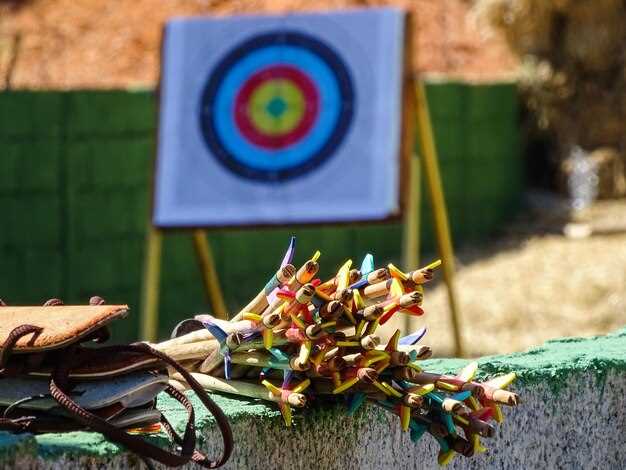
Archery Tournaments 101 | Details on Target Sizes, Distances, Whistles, Time to Shoot etc.
Archery Tournaments 101 | Details on Target Sizes, Distances, Whistles, Time to Shoot etc.
Q&A:
What are the key safety measures that need to be in place for an archery contest?
Safety is a top priority when organizing an archery contest. Ensure that there is a clear and visible barrier around the archery range to prevent unauthorized entry. A designated official should oversee the safety protocols and brief all participants on the safety rules beforehand. Make sure that all equipment is checked and maintained regularly. Spectators must stay behind the safety lines at all times, and a first-aid kit should be readily available. Clear signaling, such as whistles or flags, should be used to communicate the start and end of each round.
How should the scoring system be structured in an archery contest?
In an archery contest, the scoring system typically involves targets with concentric circles, each with different point values, often ranging from 1 to 10 points. Depending on the type of contest, scores can be accumulated over several rounds. For a standard setup, each archer shoots a certain number of arrows per round, and the total score is the sum of all points from those arrows. This can be further adjusted for team events, where the combined scores of team members determine the team’s standing.
What qualifications do judges need in an archery contest?
Judges in an archery contest should possess a solid understanding of the sport, including its rules and scoring system. Ideally, they should have some form of certification, such as from a recognized archery association. Experience in previous tournaments is highly advantageous, as it ensures familiarity with handling disputes and making swift, fair decisions. Judges must demonstrate impartiality and possess good observational skills to accurately assess performance and ensure compliance with contest regulations.
How do you ensure fair play among participants in an archery contest?
Ensuring fair play requires clear communication of rules and vigilance from organizers. Establish explicit rules regarding equipment conformity, and check bows and arrows prior to the competition. Use standardized equipment if possible. Random checks can also be conducted to ensure everything is in line with regulations. Appoint independent judges to oversee the event, and provide a process for resolving disputes. Encouraging sportsmanship among participants by reinforcing ethical behavior standards helps maintain fairness and integrity.
What are common distance requirements for different categories in an archery contest?
The distance from which archers shoot depends on the type of event and the category, such as juniors, seniors, or professional levels. In target archery, standardized distances are often used, such as 70 meters for adults during international competitions like the Olympics. Youth categories might have reduced distances, such as 30 meters or less. Indoor contests generally feature shorter distances, usually around 18-25 meters. Official regulations should always be consulted to ensure the distances comply with governing bodies like World Archery.
What are the safety measures that need to be in place for an archery contest?
Safety is a top priority in organizing an archery contest. Organizers should set up a designated shooting range with clearly marked boundaries to ensure that both participants and spectators are aware of the safe zones. It is crucial to have a safety officer present at all times to oversee activities and enforce rules. Participants must wear protective gear like armguards and finger tabs, and they should be briefed on proper equipment handling. Additionally, a first-aid kit should be available on-site, and emergency protocols must be established in case of an accident.
